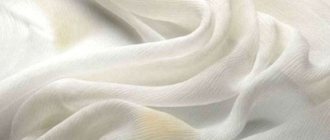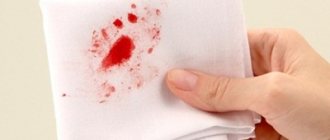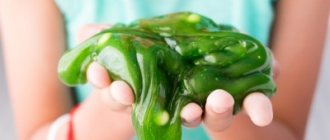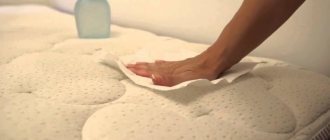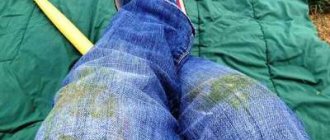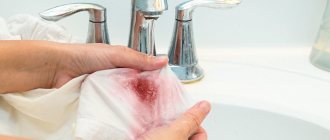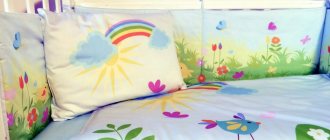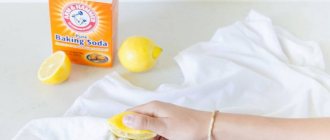How to bleach bed linen without damaging the structure and so that it lasts for many, many years. It’s especially unfortunate for linen items, which themselves have a long service life. Next, we will look at the best and most reliable methods and tricks for whitening laundry. And also a grandmother’s recipe that you may not have heard of.
- Why does laundry turn gray?
- How to bleach laundry in a washing machine
- How to whiten sheets at home
- How to make whiteness at home
- The best way to bleach laundry at home
- Grandma's Secret Way to Whiten Laundry
Store-bought bleaches: which one to buy
To make the right choice, you need to study the range offered by manufacturers and the mechanism of action of various products.
- Chlorine. As a result of a chemical reaction of the active component (sodium hydrochloride), active oxygen is released, which is a bleaching agent.
- Optic. Contains luminescent dyes that create an optical illusion: the laundry looks snow-white, but in fact it is not.
- Oxygen. As a result of a chemical reaction of the active component (hydrogen peroxide, potassium peroxosulfate, sodium or potassium peroxocarbonate), active oxygen is released, which, being a powerful oxidizing agent, eliminates contaminants.
The pros and cons of different types of bleaches are described in the table below.
Table - Advantages and disadvantages of professional bleaches
| Bleach type | Behind | Against |
| Chloric (White, Ace) | - Affordable price; — high-quality disinfection; - whitens even in cold water | — Damages the fabric, reduces strength; — not suitable for automatic washing; — caustic fumes can cause irritation and poisoning; — used only when washing items made of cotton and linen, not suitable for delicate fabrics and synthetics |
| Optical (“OV-1”) | — Possibility of achieving the effect of dazzling whiteness | - Works only on clean things; — does not remove stains and stains; - does not rinse out of fabric |
| Oxygen (“ecO2”, “Selena”, “Persol”, Extra, Shabondama) | — Delicate removal of contaminants; — possibility of use at low water temperatures; — helps to whiten laundry at home effectively; - completely rinses out of the fabric; — provides good disinfection; - can be mixed with powder when machine washed | - High price |
How to use
When buying bleach, it is better to give preference to products without chlorine. When using oxygen fabric bleach or optical bleach, it is recommended to strictly follow the instructions on the package, since the dosage and method of application for hand and machine washing may differ.
Often housewives “the old fashioned way” use the most affordable chlorine bleach - whiteness, considering this product to be effective and the best. However, you need to remember that frequent use of bleach can have a bad effect on the condition of the fabric and you should only use it when hand washing cotton and linen items. To bleach things white, be sure to wear rubber gloves and follow these four steps.
- Stir 100-200 g of grated brown soap (72%) into 10 liters of warm water.
- Add white to the composition (a tablespoon per 3 liters of solution).
- Leave the laundry in the prepared product for 15-20 minutes.
- Rinse thoroughly in clean water.
Our opinion about exotics
Many people recommend bleaching laundry with potassium permanganate. We do not recommend! It is difficult to carefully dilute potassium permanganate; it still settles in the form of small dots at the bottom of the container. If such a “dot” accidentally gets on your sheet, the stain will remain forever.
We recently learned about a method of bleaching eggs with shells. We don’t know, we didn’t have to try it, because... We didn’t collect 100 grams of shells, they were too light. But if someone has a lot of shells on their household, take 100 grams, sew them into a linen bag, and put it in the washing machine, directly into the drum. They say that the product perfectly whitens clothes during washing.
Use the suggested tips and remember that it is much easier not to “wear out” an item than to bleach it afterwards.
“Grandmother’s” advice: boiling...
Despite the abundance of special products on store shelves, “grandmother’s” methods of whitening clothes do not lose their relevance. Folk remedies are a real salvation for housewives who care not only about the cleanliness of the house, but also about the safety of the family budget. The most popular option is boiling. But it is permissible to resort to this method only when bleaching cotton and linen products: these fabrics are not afraid of high temperatures.
Before boiling, it is necessary to prepare a basic cleaning solution. The recipe is as follows: dissolve 0.5-1 cups of washing powder or 100-30 g of 72% brown soap pre-ground on a coarse grater in 10 liters of warm water. Boiling in a solution of laundry soap is more environmentally friendly. This method is recommended for children's sleeping sets.
Classic version
- Cover the bottom of a large galvanized or enameled container with a piece of white cloth or a towel.
- “Load” bed linen into the container, having first thoroughly soaped any existing stains.
- Pour in the previously prepared cleaning solution.
- Bring the mixture to a boil and let the laundry simmer over low heat for half an hour to an hour.
- Stir the products from time to time with a wooden stick or special tongs.
You should not use dishes made of copper and iron for boiling: such materials can oxidize and stain the material when heated.
"Advanced" option
To make boiling bleaching more effective, additional components can be added to the detergent composition.
- Ammonia. A tablespoon of the product is immediately mixed into the cleaning solution.
- Bleaching powder. Pour an equal amount of water into a teaspoon of lime and mix. Dissolve the resulting slurry in a liter of water and let the mixture settle: it should become completely transparent. Add the finished product to the bed linen boiling in the washing solution and, stirring constantly, let it simmer for half an hour. When used frequently, bleach significantly degrades the quality of the material.
- Soda ash or baking soda. Soak the laundry in a boiling soap solution for half an hour with the addition of three to four tablespoons of soda.
- Soda, turpentine, brown soap. Boil things for half an hour in a special composition: stir 50 g of soda, 70 g of turpentine and 100 g of crushed brown soap in 10 liters of water.
When using bleach, turpentine and ammonia, it is better to leave the kitchen, returning periodically to stir the laundry, as harmful fumes are released during the heating process.
Bleaching Safety
When working with chemicals and hot water, it is important to take care not only of your bed linen, but also of your health. Following safety precautions will help you avoid burns and allergic reactions:
- When using household chemicals, strictly follow the manufacturer's instructions. Using overdoses of bleach does not affect the degree of lightening, but produces more harmful fumes. In people with hypersensitivity, this causes allergic reactions and breathing problems.
- When boiling or bleaching with aggressive substances, protect your eyes, hands, and lungs. Wear a mask and gloves.
As you can see, there is no difficulty in bleaching your laundry at home. The main thing is to choose the right product and follow the instructions. Then the shining whiteness of sheets and pillowcases will become familiar.
... soaking
It is not always possible to resort to boiling bedding. The following may interfere with the implementation of this method:
- Lack of time;
- delicacy of fabric;
- lack of kitchen space or necessary equipment.
Therefore, for a modern housewife, the question of bleaching without boiling is relevant. In this case, long-term soaking in special compounds is suitable.
Soda
- In 10 liters of warm water, stir ten tablespoons of soda (baking or soda ash) and five tablespoons of ammonia solution.
- Load the kit into the composition.
- After three to four hours, wash the items (in a washing machine or by hand) and rinse vigorously.
Soda is considered one of the safest bleaches for fabrics. However, this product is difficult to deal with heavy stains. This method will help remove yellowness from bed linen, but in particularly advanced cases you will have to repeat the manipulation several times.
Solevoe
- Dissolve five to seven tablespoons of table salt in 10 liters of warm water.
- Leave the bed linen in the composition overnight.
- Wash items in the usual way.
Combined
- Mix two tablespoons of ammonia and washing powder in 10 liters of warm water.
- Add three tablespoons of peroxide (3%) and eight tablespoons of soda.
- Soak the laundry in the mixture for four to five hours.
- Wash items in the usual way, rinse.
Mustard
- Pour boiling water over mustard powder at the rate of one tablespoon per liter of liquid.
- After two hours, drain the water and use it to soak bed linen.
- Keep things in the composition for at least three to four hours.
- Wash items in the usual way.
This homemade bleach recipe is suitable for delicates and synthetic fabrics.
Video on the topic
Oily
- In 10 liters of hot, just boiling water, dilute two tablespoons of bleach and vegetable oil. (Regular sunflower oil will do).
- Add five tablespoons of washing powder.
- Immerse the laundry in the composition.
- Cover the container with a lid or plastic wrap.
- After ten hours, rinse the laundry in running water.
- Throw it into the machine.
In turpentine
- To make this fabric bleach at home, combine two tablespoons each of ammonia and turpentine.
- Pour the mixture of pharmaceutical drugs into 5 liters of water.
- Immerse machine-washed bedding in the solution for several hours.
- Rinse vigorously.
Manganese
- Boil 10 liters of water and immediately stir 100 g of laundry soap (72%) or a glass of washing powder into the liquid.
- In a separate small jar, dilute several crystals of potassium permanganate: the solution should turn out slightly pinkish.
- Pour potassium permanganate into the detergent composition.
- Immerse the laundry in the solution and cover the container with a lid or polyethylene.
- To enhance the effect, things can be pre-moistened and rubbed with laundry soap.
- After six or more hours, rinse the items and try to further wash the bed linen from grayness in the machine.
The use of potassium permanganate for bleaching laundry is best considered as a last resort. Firstly, today the drug is not available in pharmacies without a prescription, so if you don’t have a supply at home, getting it is problematic. Secondly, it is not always possible to dissolve crystals well; if an undissolved “point” comes into contact with a white sheet, it will be quite problematic to remove it.
Linen with stains
Regular care is not enough to cleanse fabric from dirt. Stains must be treated before washing. Modern housewives use synthetic stain removers, but folk recipes can be an excellent alternative. Stains of various origins are removed by the following means:
- Gasoline – oil-salt contamination.
- Turpentine - oil paints, birch tar.
- Kerosene – traces of vegetable oil, products based on it (sprats, fried foods).
- Vinegar – stains from fish oil, rust.
- Ammonia - traces of egg yolks, whites, chocolate, brewed coffee.
- Soap solution - blood stains, traces of sweat.
It is recommended to first dry greasy marks with an iron - place a clean cloth on the stain and run the heated device several times. After using each product, the product must be washed and rinsed thoroughly.
How to bleach white bed linen if you don't have time
The fast pace of modern life forces housewives to look for express methods of whitening bed linen. Such methods exist, but it is important to understand that they will not cope with severe contamination. The most basic option: add a couple of tablespoons of baking soda into the washing machine along with the powder. What else should I do? Try the method of whitening laundry with hydrogen peroxide. You should act in five stages.
- Load the kit into the machine.
- Combine a tablespoon of ammonia and two tablespoons of peroxide in 5 liters of water.
- Heat the solution over low heat to 70°C, but do not allow it to boil.
- Soak washed laundry in the prepared mixture.
- After 30-40 minutes, rinse the items thoroughly in clean water.
When using hydrogen peroxide, it is important to ensure that the laundry is completely immersed in the solution: yellow stains will appear on the uncovered areas after drying.
Reasons for the loss of whiteness
White bed linen becomes gray or even yellow after just a few washes. This happens because some powders contain elements that, when interacting with water salts, color the fabric. But the main enemy of fabric is hard water.
Important! Due to the high concentration of salts, water deteriorates the quality of washing: stains remain on the fabric, the performance characteristics of the product deteriorate, and chemical compounds that are harmful to the skin remain in the fibers of the fabric.
Color may also be affected by storage in a damp environment. Also, you should not leave your laundry wet for a long time, otherwise mold and an unpleasant odor may appear.
It is not recommended to wash light-colored laundry with colored items, as yellow (and other) stains may appear on the white fabric. It is not for nothing that there is a recommendation to separate laundry by color categories before washing.
"Snow" rinses
A lifesaver that returns whiteness to laundry will be homemade rinse aids.
- With boric acid. Dilute boric acid in warm water (one or two tablespoons per 3 liters of liquid). Rinse the washed clothes in the composition for several minutes. After this, rinse thoroughly in clean water.
- With starch or baking powder. Stir two to four tablespoons of potato starch or baking powder into 10 liters of clean warm water. In the composition, rinse the laundry after washing. No additional rinsing in clean water is required.
After some bleaching methods, products acquire an unpleasant odor. To make the fabric smell fragrant, you can rinse the laundry in clean water, after dissolving a small amount of commercial fabric softener or two or three drops of your favorite essential oil.
Special industrial bleaching agents (some recommendations)
The easiest way to whiten yellowed sheets, duvet covers and pillowcases is to buy a stain remover at the store and wash the items in its solution. But, this method requires compliance with the rules:
- Before washing, you need to study the manufacturer's recommendations on the label: temperature, spin, warnings.
- You need to pre-soak your laundry separately from other items, especially colored ones.
- Chlorine-containing products are not suitable for cotton fabrics with embroidery - its aggressive components destroy natural fibers.
To achieve maximum whitening effect, you need to use products marked “for white”, which include: sodium perborate, fumaric acid, subtilisin.
Application of soda
Is it possible to whiten clothes using a washing machine? Baking soda will help, but it can only remove fresh stains. It is enough to add the bulk substance to the powder compartment and start the washing process to ultimately get things shining with whiteness.
We bleach, starch and use blue
When using special bleach, we recommend that you do not skimp on the cleaning agent itself and water. It’s better to put smaller things, otherwise there won’t be a good result. You can avoid soaking and boiling in the following way.
We load the clothes into the machine, add powder, set the temperature to 30 degrees and completely turn off the spin cycle. At the end of the cycle, turn on the standard mode, not forgetting to add more washing powder. You can emphasize the snowy freshness by starching and bluing the fabric. We carry out these procedures during rinsing.
To starch fabric, pour a small amount of starch (from 1/4 teaspoon to 1 tablespoon, depending on the amount of work and the desired degree of hardness) into a glass, add water, stir and pour into the basin where you are going to rinse the item of clothing.
It should be rinsed, taken out of the water and wrapped in a towel. We dry the starched product in a straightened form - placing it on a towel or hanging it on a rope.
For bluing, use a small amount of blue or a couple of drops of brilliant green, which is added to a bowl of water for rinsing. After rinsing, twist and dry the product as usual.
